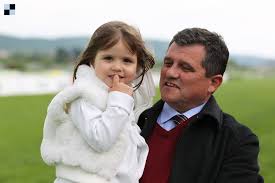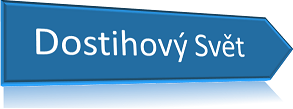20th anniversary of Most Racecourse

The meeting at Most on Saturday, August 26th, celebrates the 20th anniversary of the opening of the racecourse. It is a good time to remember the people without whose commitment and dedication there would be no Most racecourse, to appreciate the expert revitalization of the Velebudice slag heap on which it was constructed, and to consider what remains to be done. The racecourse area is managed by Hipodrom Most. The majority shareholder of this association since May 2016 has been the Charvát Group, headed by Dr Jiří Charvát (see picture), president of the Jockey Club of the Czech Republic. The minority shareholder is the Town of Most.
The first race meeting was held at Most racecourse on September 13th, 1997. Although it took place 25 years after the idea of setting up a racecourse on the Velebudice slag heap was first proposed, there were not yet any stands, and there was also no elevated tower for the judges. The commission watched the races from portable cabins, and the first VIP area was in a marquee.
The racecourse area is a monument in particular to two men, Jaroslav Podolan and Dr Stanislav Štýs. Jaroslav Podolan was a racehorse trainer, and was in charge of horse breeding at Svinčice, near Most. Described by those who knew him at the time as a visionary and a dreamer, Podolan in fact did much more than dream of setting up a racecourse on a slag heap. He supplied enormous energy and vitality, and was able to convince good and powerful people that they must help to implement his dream. In the period of ‘normalization’ in the 1970s and 1980s, Jaroslav Podolan put together a network of influential supporters of his project, tirelessly promoting what had initially been considered by sensible people to be a fantasy project.
Dr Stanislav Štýs was in charge of recultivation work for North Bohemian Brown Coal Mines. He is a forestry engineer with a doctoral degree in agriculture and forestry. From his student years in the early 1950s, he had worked on issues in the recultivation of lands impacted by mining. Štýsset up the Czech school of recultivation, and he is an internationally recognized expert and innovator in the field ofrecultivating and revitalizing landscapes impacted by mining. From the 1950s, he was involved as an expert in the strategic programme for recultivating the devastated mining landscapes in north Bohemia. His expert input, his enthusiasm and ingenuity, and his friendship with Jaroslav Podolan, were essential to the implementation of the Most racecourse project.
In the twentieth century, vast opencast brown coal mining areas were a feature of the north Bohemian countryside, and also of the landscapes on the other side of the German border, mainly in the territory of former East Germany. There were huge devastated mining landscapes, and combusting the low-grade coal in the local power plants and heavy industries led to acid rains, highly-polluted lakes and rivers, and dying forests. The area around Most was famous for its lunar landscape and for its smokestacks.
Although dramatic improvements in the north Bohemian and east German landscapes did not begin until after the Changes in 1989, it should be acknowledged that the necessary regeneration knowhow was already in place in the 1970s and earlier. Dr Stanislav Štýs was the top expert in this field, and the expert regeneration of the vast area that now includes Most racecourse owes a great deal to him.
The Most racecourse project was not a typical regeneration project in the 1970s and the 1980s. At that time, funding was available in particular for agricultural and forestry projects. Most racecourse was an early recreational reclamation project, and the support of Dr Štýs for this innovative idea was crucial.
Dr Štýs ensured that the Velebudice slagheap was expertly revitalized and landscaped, and would in due course function well and be a beautiful location. Jaroslav Podolan energetically cultivated party officials who supported the project and found funding for it. However, there was an unfortunate lack of expertise in racecourse design, especially in the early years of the project. Podolan did not know that a freshly-laid slagheap takes many years to settle, and initially sinks by many centimetres per year, and that foundations for major structures cannot easily be based on slagheap materials. Podolan had made detailed plans for the course before expert racecourse designers from France took one look at the proposed site and pointed out that it would not be acceptable for the grandstand to face south, as spectators would be unable to view the racing comfortably.
Funding was finally assured, and work on the racecourse project began in 1982. The idea was to complete it by the 1990, but a fundamental problem was the need to leave the racecourse area time to settle. The project was incomplete when the Changes came at the end of 1989. Then, the whole system for funding regeneration projects was transformed, and unfinished non-standard projects like Most racecourse did not automatically continue to receive the necessary financial support.
Problems with the design of the racecourse that were recognized in time were dealt with before construction work began, but some fundamental problems with the course have remained until the present time. The contour of the last bend is not right. There is a considerable downhill slope between the crown of the bend and the finishing post. Ideally, this would have been taken into account when the slagheap was being landscaped. It can probably be dealt with satisfactorily by racing left-handed at some time in the future. Jiří Charvát is negotiating with the Town of Most about this matter, which will, of course, involve some investment.
A more intractable problem with Most racecourse is with the straight 1 200-metre track. It is the only straight sprint course in the country, but the starting point is 12 metres higher than the winning post. Trainers never liked to run their horses there, and it was last used about 10 years ago. If we race left-handed in the future, the straight sprint track will finish in the wrong place. If we are ever to have serious sprint racing in the Czech Republic, a straight 1 200-metre track is essential. However, I do not see how it is to be done at Most racecourse.
The purchase of the majority shareholding in Hipodrom Most by the Charvát Group in 2016 ensures that horseracing will continue at Most. The previous owners had been showing clear signs of wanting to get out of horseracing, and it was of great importance to have owners committed to the sport. The Charvát Group is led by the president of the Czech Jockey Club. The other shareholder is the Town of Most, which should want to continue to support the leisure activities available on the old Velebudice slagheap, which is now rapidly turning into an attractively landscaped area of greenery.
Most racecourse is a monument to the efforts of Jaroslav Podolan and Stanislav Štýs, and all the others who helped to turn this fantasy project into reality. It is too soon to add the name of Jiří Charvát alongside the names of these two men. However, his clear desire to develop the racecourse area for the benefit of Czech horseracing and the people of Most and north Bohemia means that the 20th anniversary of the racecourse can mark the beginning of good times for Most racecourse.
***
A new brochure under the title Most Racecourse 1997 – 2017 has been published in English and in Czech by Hipodrom Most. The information here about the history of the construction of Most racecourse has come from this brochure.
